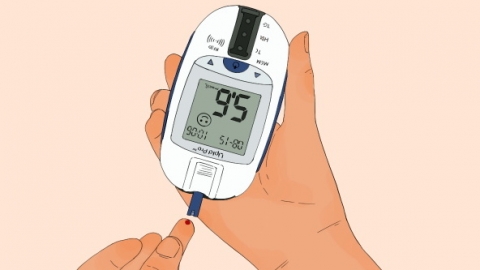What can people with high blood sugar eat?
People with high blood sugar can choose low-GI foods such as oats, bitter melon, tofu, broccoli, and chia seeds. They may also take hypoglycemic medications as directed by a physician, such as Metformin Hydrochloride Tablets, Acarbose Tablets, Glimepiride Tablets, Repaglinide Tablets, and Sitagliptin Phosphate Tablets, which can assist in controlling blood glucose levels. A detailed analysis is as follows:

I. Foods
1. Oats: Rich in soluble dietary fiber (beta-glucan), which delays carbohydrate digestion and absorption, reducing the rate of post-meal blood sugar elevation. It is recommended to choose unsweetened pure oat flakes.
2. Bitter Melon: Contains bitter melon extract and insulin-like substances that may enhance cellular glucose uptake. Eating it raw or in cold dishes helps preserve more active components.
3. Tofu: A plant-based protein source with a low glycemic index and containing soy isoflavones. Replacing part of animal protein with tofu can reduce fat intake and insulin resistance.
4. Broccoli: High in fiber and low in calories, it contains glucosinolates that promote insulin sensitivity. It is recommended to stir-fry or steam it to preserve nutrients.
5. Chia Seeds: Rich in dietary fiber and omega-3 fatty acids, they absorb water and expand in the stomach, delaying gastric emptying and reducing post-meal blood sugar fluctuations. Chia seeds can be used as an ingredient in yogurt or salads.
II. Medications
1. Metformin Hydrochloride Tablets: An oral hypoglycemic agent that lowers blood glucose by reducing hepatic glucose output and improving peripheral insulin resistance. It is suitable for first-line treatment of type 2 diabetes.
2. Acarbose Tablets: An α-glucosidase inhibitor that delays carbohydrate breakdown in the intestines, reducing postprandial blood glucose peaks. It should be taken with the first bite of food.
3. Glimepiride Tablets: A sulfonylurea insulin secretagogue that stimulates insulin secretion from pancreatic β-cells. It is suitable for patients with type 2 diabetes who still have some pancreatic function.
4. Repaglinide Tablets: A short-acting mealtime glucose regulator that rapidly controls postprandial blood glucose. It is taken with meals to avoid the risk of hypoglycemia.
5. Sitagliptin Phosphate Tablets: A DPP-4 inhibitor that regulates blood glucose by enhancing the activity of the incretin GLP-1. It is suitable for patients who cannot tolerate metformin.
Diet should be individually adjusted in combination with medication. Monitor blood glucose changes two hours after meals, avoid fasting or excessive consumption of high-GI foods, and schedule regular follow-ups to evaluate treatment efficacy and adjust the treatment plan accordingly.





